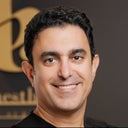Posted underFacial Fat Transfer q&a
Hollow eyes after lower transnconjunctive blephorplasty - what can I do to fix this? (photos)
I had a lower blepharoplasty to remove some herniated fat. It left me with very bad under eye hollows. Is there anything I can do to fix this?
Answers (2)
From board-certified doctors and trusted medical professionals

Dr. A.J. Amadi, MD
Oculoplastic Surgeon, Board Certified in Ophthalmology
Answer
Dr. Mats Hagstrom, MD (license on probation)
Board Certified Plastic Surgeon
Answer
More Facial Fat Transfer Questions
See all Facial Fat Transfer Q&AWE SEND PRETTY
EMAILS
What’s trending? Who’s turning heads? Which TikTok myths need busting? We’ve got you. No fluff, no gatekeeping—just real talk. Get our free, unfiltered newsletter.
